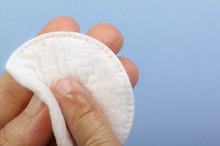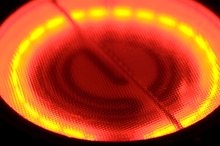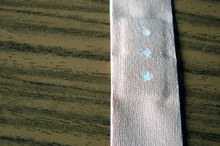Uses of Antiseptic Cream
Antiseptic creams, also known as antibiotic or first-aid creams, are sold over the counter. They contain either streptomycin or penicillin antibiotics capable of killing bacteria that cause infections. Some antiseptic creams also have a mild anesthetic that relieves minor pain and soothes the skin during the healing process. Applied topically, antiseptic creams inhibit the growth of microorganisms. In most cases, only a thin layer of antiseptic cream is necessary to do the job.
Cuts and Lacerations
Cuts and lacerations are injuries to the skin caused by minor injury. The Children’s Hospital of Pittsburgh reports that minor cuts and lacerations that do not involve the face and measure less than 1/2 inch in length are treatable at home. Such injuries require washing with soap and warm water, allowing the water to run over the cut to remove any dirt or debris. An antiseptic cream applied to the cut after washing will help prevent infection and scarring. A sterile bandage will keep the laceration clean. Daily application of the antiseptic cream and a change of bandage will expedite healing.
- Cuts and lacerations are injuries to the skin caused by minor injury.
- An antiseptic cream applied to the cut after washing will help prevent infection and scarring.
Burns
Home Remedy for Stove Burns
Learn More
Antiseptic creams are suitable for use on minor first-degree burns. Penn State University explains that a first-degree burn can form after contact with a hot beverage, grease, cigarettes, too much sun and even friction. A minor burn is sensitive, red and sometimes swollen. Minor first-degree burns require a gentle washing with soap and water, followed by the application of an antiseptic cream two to three times a day. A sterile dressing overtop is optional, but it is more likely to keep the antiseptic cream in place.
- Antiseptic creams are suitable for use on minor first-degree burns.
- Minor first-degree burns require a gentle washing with soap and water, followed by the application of an antiseptic cream two to three times a day.
Fungal Infections and Rashes
The University of Washington explains that fungal infections stem from microscopic organisms that invade the epithelial layer of the skin. Fungal infections can lead to skin irritations and rashes that require the application of an antiseptic cream. The antibacterial and antifungal properties in antiseptic creams help to kill the organisms and prevent the rash from spreading. The rash requires a gentle cleaning with soap and water and the application of an antiseptic cream twice daily until the rash resolves.
- The University of Washington explains that fungal infections stem from microscopic organisms that invade the epithelial layer of the skin.
- The antibacterial and antifungal properties in antiseptic creams help to kill the organisms and prevent the rash from spreading.
Related Articles
References
Writer Bio
Jonae Fredericks started writing in 2007. She also has a background as a licensed cosmetologist and certified skin-care specialist. Jonae Fredericks is a certified paraeducator, presently working in the public education system.








